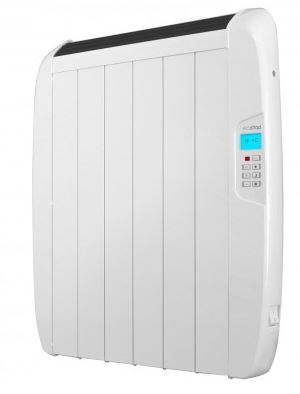 Out with the old, in with the new – the first month of the year signals a fresh start for everyone. January is full of exciting opportunities as we strive to meet our New Year’s resolutions: you might be deciding to learn a new language, take up a new hobby or start a new exercise regime to offset any indulgence over Christmas. The electric heating industry is also ringing the changes this month as new EU regulations came into force on the 1st January which will mark the end of products with poor controllability. For those who may be unaware of the new legislation, this blog takes a look at what the changes entail and how they will affect the availability of cheap electric radiators with basic control functions.
Out with the old, in with the new – the first month of the year signals a fresh start for everyone. January is full of exciting opportunities as we strive to meet our New Year’s resolutions: you might be deciding to learn a new language, take up a new hobby or start a new exercise regime to offset any indulgence over Christmas. The electric heating industry is also ringing the changes this month as new EU regulations came into force on the 1st January which will mark the end of products with poor controllability. For those who may be unaware of the new legislation, this blog takes a look at what the changes entail and how they will affect the availability of cheap electric radiators with basic control functions.
What are the new EU regulations?
 If you’ve not read our previous blog post about ‘Lot 20’, this new legislation has been created to improve the overall energy efficiency of heating products for sale across the EU. Electric heaters comprise a very large range of products – from portable fan heaters, to storage heaters, to infrared panels – but by comparing these different systems, a severe disparity is highlighted in terms of their controllability and efficiency. Extensive research conducted by the EU concluded that the efficiency of most products could be greatly improved upon with the addition of existing technologies, so with this in mind, new plans were drawn up to create greater uniformity within the electric heating market. By levelling the playing field of product efficiency, running costs are kept as low as possible for consumers throughout the EU, which in turn lessens the burden on power stations to meet energy demand.
If you’ve not read our previous blog post about ‘Lot 20’, this new legislation has been created to improve the overall energy efficiency of heating products for sale across the EU. Electric heaters comprise a very large range of products – from portable fan heaters, to storage heaters, to infrared panels – but by comparing these different systems, a severe disparity is highlighted in terms of their controllability and efficiency. Extensive research conducted by the EU concluded that the efficiency of most products could be greatly improved upon with the addition of existing technologies, so with this in mind, new plans were drawn up to create greater uniformity within the electric heating market. By levelling the playing field of product efficiency, running costs are kept as low as possible for consumers throughout the EU, which in turn lessens the burden on power stations to meet energy demand.
What does this mean for electric heaters?
All newly manufactured electric heaters must meet a certain efficiency percentage target if they are to be sold within the EU. To take into account the broad scope of systems within electric heating, different product types have different energy efficiency targets. For example, fixed electric wall heaters such as electric radiators must achieve a target of 38%, whereas portable electric heaters will only need to achieve 36% efficiency. All electric heaters start with a base efficiency of 30% and receive extra points for each energy-saving feature they possess. This means that low-end electric radiators that come with substandard controls will not meet their percentage requirements and will be phased out, leaving only the cream of the crop available for sale.
How will this affect the consumer?

How do I know if a product is compliant?
All products made on or after the 1st January will need to be supplied with a data sheet by the manufacturer which clearly explains how the appliance meets the new EU requirements. In this data sheet, you can expect to find information regarding the product’s heat output, auxiliary electrical consumption and a list of its energy-saving features. This means that it’s up to the manufacturers to clearly display their ‘workings out’ so you can see at a glance how their products meet conformity standards. Please note that this data sheet is only mandatory for products manufactured from 2018 onwards – older models of heaters that are still being sold for stock clearance purposes will not be provided with this information. 2018 will likely serve as a transitionary period as supplies of non-compliant models run out and are superseded by the new range of products. Not all electric heaters are required to meet efficiency targets, however. Notable exceptions are outdoor heaters which can’t be used with thermostatic controls, and towel rails because they have a primary use other than room heating.
A new year and a new start for electric heating
As we get stock of updated products, we will be periodically making amendments to product pages to reflect any new features. If you’d like more information on the new Lot 20 legislation, a comprehensive blog can be found here. 2018 will hopefully mark a considerable leap forward for energy efficiency, so even if we don’t manage to stick to our new year’s gym routine, we’ll at least be slimming down our heating bills.





